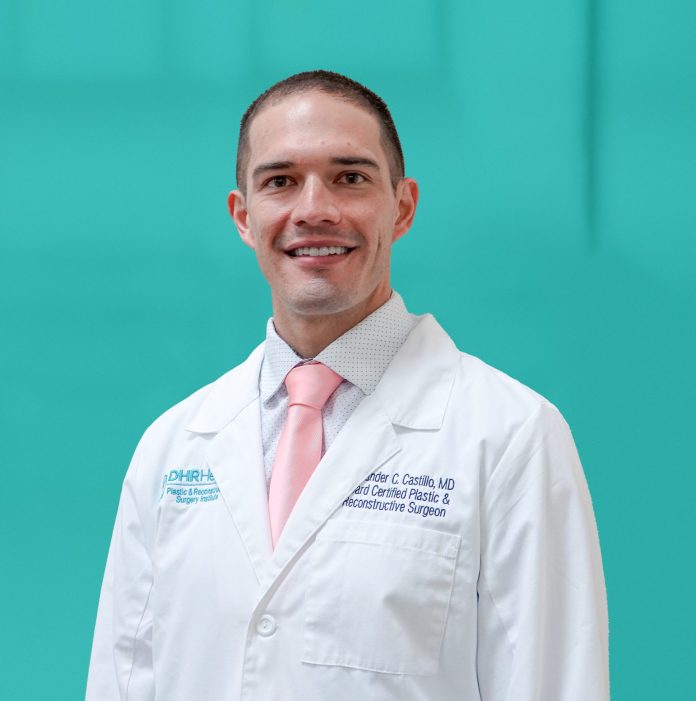
BY: DR. ALEXANDER CHASE CASTILLO
DHR HEALTH PLASTIC AND RECONSTRUCTIVE SURGEON
NEW PATIENTS WELCOMED, FOR APPOINTMENTS CALL: (956) 362-8160
ADDRESSS: 1100 E. DOVE AVENUE, SUITE 400, MCALLEN 78504
Renewing Strength: Breast Reconstruction After Cancer
October is a special month to me as it’s a time to focus on getting the awareness of both breast cancer screening and breast cancer reconstruction out to as many people as possible. Breast cancer screening and early detection is of utmost importance to improve the overall outcome. Hearing your doctor say “you have breast cancer” can be a life changing experience as a mixture of emotions will come flooding in which may include stress, fear, anxiety and fright. Here at DHR Health, we are with you the whole way from screening, diagnosis, treatment and reconstruction.
After my plastic surgery training in residency, my family and I moved to Maryland so that I could focus solely on breast reconstruction. There I devoted a full year only on breast reconstruction specializing in microsurgery. After completion of this fellowship my family and I relocated to the Rio Grande Valley to provide further breast reconstruction options to patients and minimize the need to travel to San Antonio or Houston for reconstruction.
WHO CAN RECEIVE BREAST RECONSTRUCTION?
Most patients are good candidates to receive some type of reconstruction. For which options are available depends on the patient’s overall health. It is best to talk with your surgeon on specific reconstruction options that are available to you. These options can be as straightforward as silicone implants placed for reconstruction to the more specialized autologous reconstruction requiring microsurgery expertise.
WHAT IS AUTOLOGOUS RECONSTRUCTION?
In autologous reconstruction, we rebuild the breast using the patient’s own tissue, which gives a natural and long-lasting result. The most common option is called a deep inferior epigastric perforator (DIEP) flap. For this procedure we use the patient’s lower abdominal tissue to rebuild the breast. This has become the gold standard in breast reconstruction as the risk for post-operative surgical site infection is greatly reduced when compared to implant-based reconstruction. In addition, many patients who undergo autologous reconstruction will unlikely need surgeries in the future once the reconstruction is complete, whereas implant-based reconstruction may require follow-up surgeries every 8-10 years.
WHO PERFORMS ‘DIEP’ FLAPS?
To successfully perform a DIEP flap, the surgeon needs specialized training and experience in microsurgery. Since the procedure is labor and time intensive, it’s important to choose a surgeon who is highly experienced and performs it regularly. Because a DIEP flap can only be attempted once, finding a skilled plastic surgeon with a strong track record with this surgery is important. Whether implant based or autologous reconstruction is chosen, most patients have ~2-3 procedures. These procedures will include ways to improve symmetry of the breast as well as get to a size the surgeon feels is safe and achieves the patient’s goals.
WHEN DOES BREAST RECONSTRUCTION START?
Breast reconstruction can happen in the immediate or delayed setting. In immediate reconstruction, the plastic surgeon will coordinate a surgery date with the breast surgeon and begin the reconstruction process under the same general anesthesia on the same day. This might be a good option for patients that are undergoing prophylactic mastectomies or have a very early detected breast cancer. In the delayed setting, the plastic surgeon can begin the reconstruction process any time after the patient has fully healed from the oncologic treatment. This can be as early as 3 months after a mastectomy or even many years later after a mastectomy.




